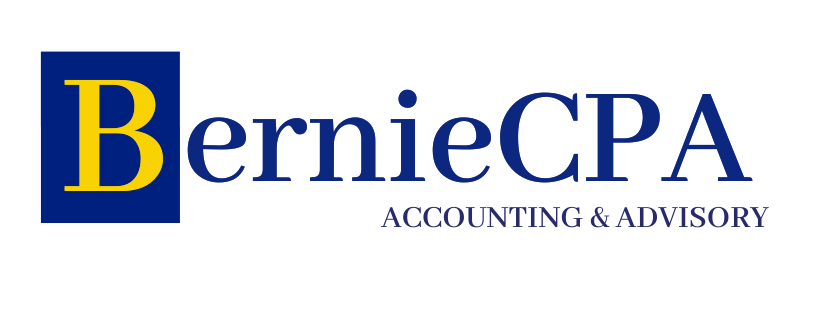Demystifying Beneficial Ownership: Who Needs to Complete the Form and How
Beneficial ownership refers to the individuals who ultimately own or control a legal entity such as a company, trust, or partnership. These individuals may not be the ones listed as the legal owners on official documents, but they have the power to make decisions about the entity’s assets and operations. Understanding beneficial ownership is crucial for preventing money laundering, terrorist financing, and other illicit activities. By knowing who the true owners are, authorities can better track and investigate suspicious financial transactions.
In many cases, beneficial ownership is obscured through complex ownership structures and the use of nominee shareholders or directors. This makes it difficult for law enforcement and regulatory agencies to identify the individuals behind illicit activities. However, with increased global efforts to combat financial crime, there is a growing emphasis on transparency and disclosure of beneficial ownership information. This has led to the implementation of beneficial ownership registries in many countries, as well as requirements for entities to disclose their beneficial owners when opening bank accounts or engaging in certain financial transactions.
Who Needs to Complete the Beneficial Ownership Form
The requirement to complete a beneficial ownership form typically applies to legal entities such as corporations, limited liability companies, partnerships, and trusts. These entities are often used for legitimate business purposes, but they can also be exploited for illicit activities due to their ability to shield the identities of their true owners. As a result, many countries have implemented regulations that require these entities to disclose their beneficial owners to relevant authorities.
In the United States, for example, the Financial Crimes Enforcement Network (FinCEN) requires certain entities to file a beneficial ownership form known as the FinCEN Form 114, also known as the Report of Foreign Bank and Financial Accounts (FBAR). This form must be filed by U.S. persons who have a financial interest in or signature authority over foreign financial accounts that exceed certain thresholds. Failure to comply with these reporting requirements can result in significant penalties. Similarly, in the European Union, the Fourth Anti-Money Laundering Directive requires member states to establish beneficial ownership registries for corporate and legal entities. These registries are intended to provide greater transparency and facilitate access to beneficial ownership information for law enforcement and regulatory purposes.
How to Determine Beneficial Ownership
Determining beneficial ownership can be a complex process, especially for entities with intricate ownership structures or multiple layers of ownership. In general, beneficial owners are individuals who directly or indirectly own or control at least 25% of the entity’s shares or voting rights, or who otherwise exercise control over the entity. This can include individuals who have the power to appoint or remove the majority of the entity’s board of directors, or who have significant influence over its management and operations.
To determine beneficial ownership, entities may need to conduct thorough due diligence on their shareholders, partners, or trustees to identify the individuals who ultimately control the entity. This may involve reviewing corporate documents, shareholder agreements, trust deeds, and other relevant records to trace the chain of ownership and control. In some cases, entities may also need to obtain declarations from their shareholders or partners confirming their beneficial ownership status.
Steps to Completing the Beneficial Ownership Form
Completing a beneficial ownership form typically involves providing detailed information about the entity’s beneficial owners, including their names, addresses, dates of birth, and identification numbers. In addition, entities may need to disclose the nature and extent of each individual’s ownership or control over the entity, as well as any changes in beneficial ownership that occur over time.
The specific steps for completing a beneficial ownership form can vary depending on the jurisdiction and the type of entity involved. In general, entities will need to gather relevant documentation and information about their beneficial owners, and then submit this information to the appropriate regulatory authority or financial institution. It is important to ensure that the information provided is accurate and up-to-date, as any discrepancies or omissions could result in penalties or other adverse consequences.
Entities may also need to periodically update their beneficial ownership information to reflect any changes in ownership or control. This may involve filing amended forms or notifications with the relevant authorities, as well as updating internal records and corporate documents to reflect the current beneficial owners of the entity.
Common Mistakes to Avoid When Completing the Form
When completing a beneficial ownership form, it is important to avoid common mistakes that could lead to inaccuracies or omissions in the information provided. One common mistake is failing to identify all individuals who meet the criteria for beneficial ownership, such as individuals who indirectly own or control the entity through intermediary entities or arrangements. Entities should conduct thorough due diligence to ensure that they have identified all relevant beneficial owners and have obtained accurate and complete information about them.
Another common mistake is providing incomplete or outdated information about beneficial owners, such as incorrect addresses or identification numbers. It is important to verify the accuracy of the information provided and to update it as necessary to reflect any changes in beneficial ownership. Failure to provide accurate and up-to-date information could result in penalties or other adverse consequences for the entity.
Entities should also be mindful of any specific requirements or deadlines for completing and submitting beneficial ownership forms. Failure to comply with these requirements could result in fines, sanctions, or other enforcement actions by regulatory authorities.
The Importance of Accurate Beneficial Ownership Information
Accurate beneficial ownership information is crucial for preventing financial crime and ensuring transparency in the global financial system. By knowing who the true owners of legal entities are, authorities can better track and investigate suspicious financial transactions and identify individuals who may be involved in illicit activities such as money laundering or terrorist financing.
In addition, accurate beneficial ownership information can help businesses and financial institutions mitigate their risks by conducting thorough due diligence on their customers and counterparties. This can help them identify potential red flags and take appropriate measures to prevent being unwittingly involved in illicit activities.
Furthermore, accurate beneficial ownership information can enhance trust and confidence in the integrity of the financial system, which is essential for promoting investment and economic growth. By promoting transparency and accountability in corporate structures, accurate beneficial ownership information can help deter individuals from using legal entities for illicit purposes and promote responsible business practices.
Resources for Assistance with Completing the Beneficial Ownership Form
Completing a beneficial ownership form can be a complex and time-consuming process, especially for entities with intricate ownership structures or multiple layers of ownership. Fortunately, there are resources available to assist entities with this task.
One option is to seek assistance from legal and financial professionals who specialize in corporate governance and compliance. These professionals can provide guidance on how to determine beneficial ownership, gather relevant documentation and information, and complete the necessary forms in compliance with applicable regulations.
In addition, many jurisdictions provide online resources and guidance on their official government websites to help entities understand their obligations regarding beneficial ownership disclosure. These resources may include FAQs, instructional videos, and sample forms to help entities navigate the process of completing a beneficial ownership form.
Furthermore, entities may also consider using specialized software or technology solutions that can streamline the process of gathering and managing beneficial ownership information. These solutions can help entities organize and maintain accurate records of their beneficial owners, as well as facilitate compliance with reporting requirements.
In conclusion, understanding and accurately disclosing beneficial ownership information is essential for promoting transparency and accountability in corporate structures and preventing financial crime. By following best practices and seeking assistance from relevant resources, entities can ensure that they comply with applicable regulations and maintain accurate records of their beneficial owners. This not only helps protect against potential legal consequences but also contributes to a more transparent and trustworthy global financial system.


